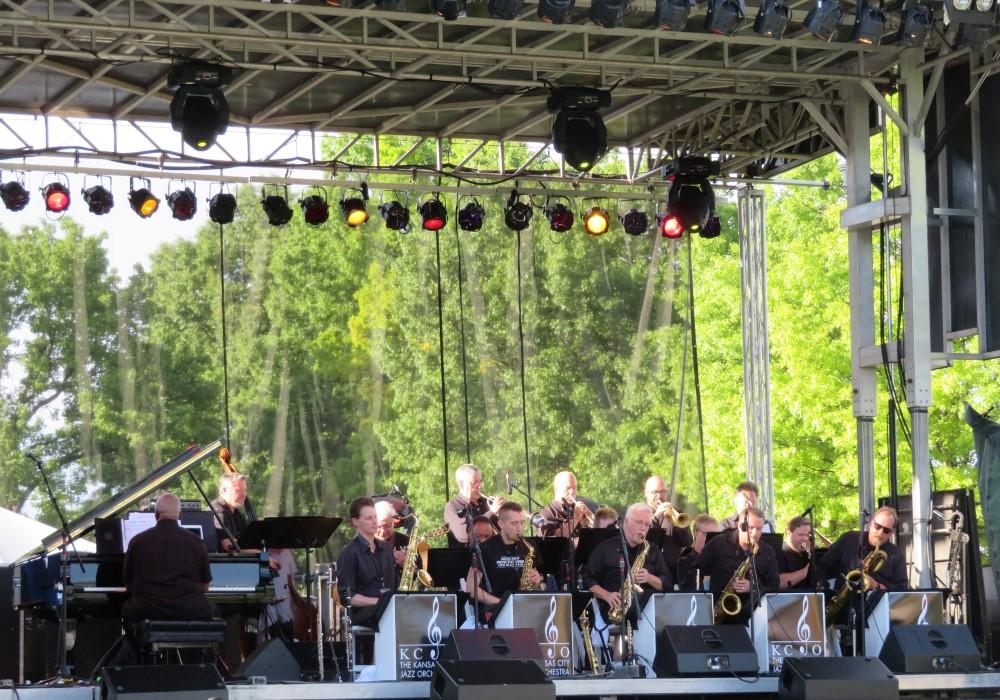

We can define Kansas City jazz and trace its evolution through a few innovative bands and soloists.

The rhythm sections of the larger bands, like the Bennie Moten Orchestra, strove to play with a more driving energy, and the soloists honed their technique through late-night jam sessions. This competition led to innovation as band leaders and soloists sought to win fans and gain more work. By the late 1920s there were over a dozen bands and hundreds of musicians that called Kansas City home. The city’s jazz scene was highly competitive. The resulting style of jazz could only have come from this town. No other American city had this combination of factors. The thriving bar scene created even more work for musicians. Although alcohol was illegal during Prohibition, bar owners bribed the police to let them serve alcoholic drinks. Musicians also benefited from political corruption. Dancing was very popular in large ballrooms such as those at the Labor Temple and the Paseo Hall. Newly arrived Black citizens were segregated into a few specific neighborhoods. Many people moved to Kansas City in the 1920s to take jobs in the manufacturing sector and to move agricultural products to global markets. Kansas City jazz musicians made their music for the Black community who lived and maintained businesses in the area around 18th and Vine Streets. The style was created by legendary musicians such as Charlie Parker, Count Basie, and Lester Young, and many others who were not so famous, but were important to the music’s evolution. This new approach arose in the 1920s and ‘30s and was quite different from the jazz styles of New York, New Orleans, Chicago, and California. It is a way of playing that focused on virtuosic improvisation and a strong rhythmic groove. Kansas City jazz is not a single musical style. The city’s growth in the 1920s and ‘30s supported a special kind of musical innovation. Located between the Midwest and the Southwest, Kansas City was a hub of economic development. Contact us.The city of Kansas City, Missouri, is known around the world for its barbecue, its beautiful parks and fountains, and its legacy of jazz. We hope to make it available as soon as possible. If you have more information about this item than what is given here, we want to know! Please note that changes made as a result of your submission will not be immediately visible to the public due to an ongoing migration to a new platform. Please contact LaBudde Special Collections for more information. Permission must be received for subsequent use and/or distribution in print or electronically. LaBudde Special Collections.ġ photograph : black and white print 13 x 18 cmĪll collection images may be freely searched and displayed. MMF 10/24/99.ĭigitizing agency: University of Missouri-Kansas City. Mutual Musicians Foundation (Kansas City, Mo.)Įlder Statesmen of KC Jazz Oliver Todd-Keys. Portrait photographs line the wood-paneled walls of other performers. A row of empty seats and tables are in front of the band. Then Elmer Price, wearing a ball cap, blowing into a trumpet in the same line of chairs as Ben and Henry at the Mutual Musicians Foundation. Then Marcellus Lee seated at the drum set by a wood-paneled wall with a glass block window just above his head. Behind Henry is Wes Knowles checking the music on a stand with the bass propped up behind him. Elder Statesmen of KC Jazz at the Mutual Musicians FoundationĮlder Statesmen of KC Jazz including Oliver Todd sitting at the piano on the far left of the photograph, then Ben Kynard blowing into a saxophone seated in front of the piano, then Henry Hoard looking down at a saxophone he holds behind a music stand.


 0 kommentar(er)
0 kommentar(er)
